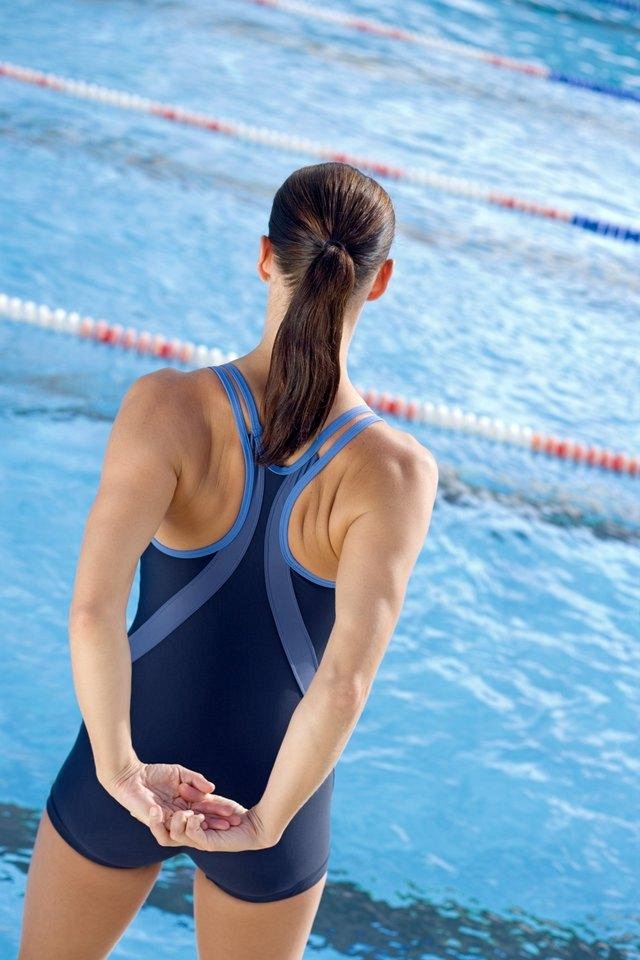Last Updated on: 18th December 2024, 12:31 pm
Swimming is an effective form of exercise with historical roots in fitness and survival. It utilizes water resistance to engage all muscle groups, providing a comprehensive full-body workout.
- Low-impact environment: Reduces joint strain and injury risk, suitable for all ages and fitness levels.
- Enhances muscle strength and endurance: Offers cardiovascular benefits for heart and lung health.
- Refreshing variety: Adds diversity to traditional workout routines.
Understanding the Full-Body Impact of Swimming

Muscles Targeted During Swimming
Swimming engages muscles throughout the body. The core stabilizes, arms and shoulders drive strokes, and legs and glutes propel movement. This targets muscles in the back, abdominals, and chest, ensuring a balanced workout.
Cardiovascular Benefits
Swimming increases heart rate, improving circulation and lung function. Regular sessions can lower blood pressure and reduce heart disease risk, enhancing overall cardiovascular health.
Comparison with Other Forms of Exercise
- Low-impact, high-reward: Minimizes joint stress, ideal for injury prevention and recovery.
- Full-body engagement: Involves the entire body in fluid motion, unlike isolated weightlifting exercises.
- Cooling effect: Provides a refreshing experience even during intense effort.
Diving Deeper: The Benefits of Different Swimming Strokes

Freestyle: The Fast Track to Fitness
Freestyle is ideal for speed and endurance, engaging the whole body. It boosts heart rate and cardiovascular health, making it a great starting point for fitness improvement.
Breaststroke: The Path to Flexibility and Toning
Breaststroke focuses on muscle toning and flexibility. It engages arms, legs, and core, improving joint mobility and muscle strength.
Backstroke: Aligning Body and Mind
Backstroke enhances posture and core stability. It strengthens back muscles and promotes a straight spine, offering a calming, rhythmic motion.
Butterfly: The Powerhouse Stroke
Butterfly is demanding but rewarding, engaging the upper body, core, and legs. It builds strength and burns calories efficiently.
Incorporating Swimming into Your Fitness Routine

Getting Started: Choosing the Right Pool and Gear
Select a pool that suits your needs, whether for laps or leisure. Essential gear includes a comfortable swimsuit, goggles, and a swim cap for an optimal experience.
Creating a Balanced Swimming Workout Plan
Alternate strokes to engage different muscle groups. Start with freestyle for cardiovascular benefits, then switch to breaststroke or backstroke for toning. Use interval training to maximize effectiveness.
Tips for Beginners and How to Stay Motivated
- Begin with short distances: Gradually increase as stamina improves.
- Master your technique: Efficient swimming reduces fatigue.
- Set realistic goals: Celebrate achievements.
- Mix up your routine: Swim with a buddy or join a class for motivation.
Swimming is a comprehensive exercise that can be enjoyable and rewarding with the right approach. Dive in and experience the benefits.
Overcoming Common Challenges in Swimming

Dealing with Water Fear and Safety Concerns
Overcome water fear by starting in shallow areas and practicing breathing exercises. Always swim in designated areas with lifeguard supervision and consider lessons for confidence.
Navigating Crowded Lanes and Etiquette
Choose a lane matching your speed and pass on the left. Pause at the wall to let faster swimmers pass. Respect and communication ensure a positive experience.
Addressing Common Swimming Injuries and Prevention
Prevent injuries by focusing on proper form and gradually increasing intensity. Incorporate strength and flexibility exercises. Rest and consult a professional if pain occurs.
Swimming offers numerous benefits but can present challenges. With the right approach, these can be overcome, leading to a rewarding fitness journey.
The Mental Health Benefits of Swimming

Stress Reduction and the Calming Effect of Water
- Swimming in water provides a calming effect, reducing stress levels and promoting mental well-being.
- The sensation of weightlessness helps lower stress and fosters relaxation.
Swimming as a Meditative Practice
- Swimming’s repetitive motions and focus on breathing create a meditative practice, enhancing mental clarity and balance.
- This practice contributes to a more balanced mood and inner peace.
The Role of Swimming in Improving Sleep and Reducing Anxiety
- Regular swimming improves sleep patterns through physical exertion and relaxation.
- It regulates stress hormones, promoting relaxation and better sleep.
- Endorphins released during swimming reduce anxiety and improve sleep quality.
Swimming offers significant mental health benefits, providing a sanctuary from stress and a tool for mental rejuvenation.
Beyond the Pool: Open Water Swimming and Competitive Swimming

Transitioning from Pool Swimming to Open Water
- Open water swimming challenges navigation skills and adaptability. Start with calm waters and short distances, gradually increasing exposure.
The Thrill and Challenges of Competitive Swimming
- Competitive swimming tests limits with intense training focused on technique, speed, and endurance.
- The camaraderie and personal achievements make the challenges worthwhile.
How to Get Involved in Swimming Competitions and Communities
- Join a swim club for structured training and competition entry.
- Connect with swimming communities for support and shared experiences.
Swimming offers diverse challenges and relaxation, from open water to competitive arenas. Embrace the adventure.
Summing Up
Swimming combines physical exercise with mental relaxation, offering unique challenges and rewards. This guide has explored swimming’s full-body and mental health benefits, highlighting its capacity to rejuvenate and strengthen. Embrace swimming for a healthier, more balanced life.

